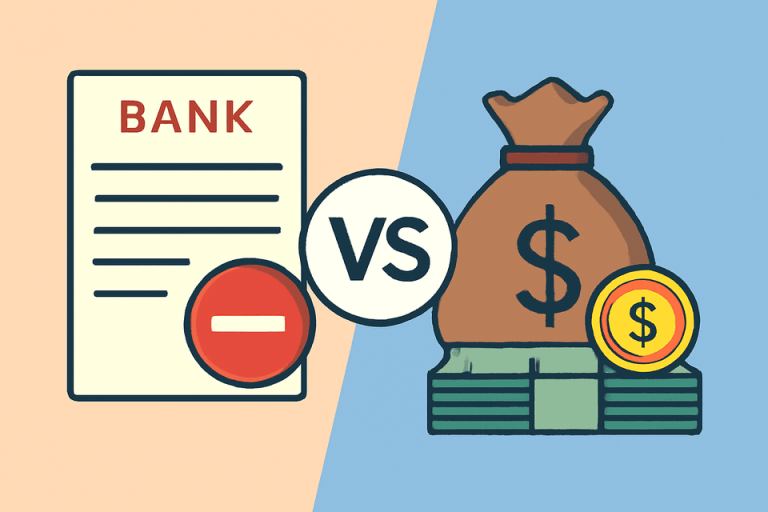The difference between cash credit and overdraft lies in their structure, purpose, and the manner in which funds are accessed and repaid. Both cash credit and overdraft are short-term financing tools provided by banks to meet the immediate financial needs of businesses and individuals. While cash credit is generally used by businesses to meet working capital requirements, an overdraft facility allows both businesses and individuals to withdraw more than what is available in their bank accounts. These financial instruments offer flexibility but have unique characteristics that make them suitable for specific purposes.
What are Cash Credit?
Cash credit is a short-term financing facility provided by banks, primarily to businesses, allowing them to borrow against the security of assets like stock, inventory, or receivables. This form of financing is specifically designed to meet the working capital needs of businesses, enabling them to manage their day-to-day expenses and operational costs without disrupting cash flow. Cash credit functions like a revolving credit facility, where businesses can withdraw funds up to a pre-approved limit, with interest charged only on the amount utilized.
Example of Cash Credit
A manufacturing business has a cash credit facility with a credit limit of $100,000. If they withdraw $60,000 for purchasing raw materials, interest will be charged on this $60,000, not the entire $100,000. As they repay, they can re-access the funds up to the credit limit as required.
Cash credit is ideal for businesses needing a steady flow of working capital to manage regular operational expenses without taking on a formal loan.
What is Overdraft?
An overdraft is a flexible credit facility that allows both individuals and businesses to withdraw more money than they have in their bank accounts. An overdraft is an arrangement between the bank and the account holder, permitting temporary access to additional funds up to a certain limit. Overdraft facilities are particularly useful in handling unexpected expenses or shortfalls in cash, providing a buffer to ensure uninterrupted cash flow. Like cash credit, interest is charged only on the amount utilized, and it’s typically unsecured, though some banks may require collateral.
Example of Overdraft
An individual has a checking account with a $2,000 balance and an overdraft facility allowing an additional $1,000. If they make a $2,500 payment, the overdraft covers the $500 deficit, and interest is charged on this amount until it is repaid.
Overdrafts are useful for both individuals and businesses to manage short-term cash flow issues, particularly when immediate funds are needed.
Overdraft vs Cash Credit: Key Difference
The difference between cash credit and overdraft lies in their purpose, eligibility, structure, and repayment methods. While both serve as short-term financing options, they cater to different financial needs.
| Aspect | Cash Credit | Overdraft |
| Purpose | Used primarily for business working capital | Used for unexpected short-term needs by individuals and businesses |
| Eligibility | Mostly businesses | Both individuals and businesses |
| Collateral Requirement | Secured with assets like inventory or receivables | Generally unsecured; sometimes secured by bank deposits |
| Credit Limit | Based on the value of collateral | Based on account balance and creditworthiness |
| Interest Calculation | Charged on the amount utilized | Charged on the amount withdrawn beyond balance |
| Repayment Flexibility | Flexible, with the option to withdraw and repay repeatedly within the limit | Flexible, with no fixed repayment schedule |
| Usage Duration | Meant for regular working capital needs | Temporary, for short-term cash flow gaps |
Cash credit is structured to support regular business operations, while an overdraft is typically for temporary cash shortages.
Conclusion
The difference between cash credit and overdraft helps businesses and individuals choose the appropriate financing tool for their unique needs. Cash credit supports businesses with consistent working capital requirements, allowing flexibility in managing day-to-day operational expenses. Overdraft, on the other hand, is useful for handling unforeseen expenses and cash flow gaps and is accessible to both individuals and businesses. By using these facilities judiciously, borrowers can enhance their financial stability and ensure smooth cash flow management, ultimately leading to stronger financial health.
Difference Between Cash Credit and Overdraft FAQs
Is cash credit available to individuals?
No, cash credit is primarily designed for businesses to support working capital needs.
Can overdraft be used for personal expenses?
Yes, overdrafts can be used by individuals for personal expenses, as long as they have an approved facility with their bank.
Is cash credit cheaper than overdraft?
Interest rates vary, but cash credit is often considered cost-effective for businesses with regular operational expenses.
Does overdraft have a fixed repayment schedule?
No, overdrafts do not have fixed repayments, allowing borrowers to repay as per convenience.
Is collateral required for an overdraft?
Overdrafts are generally unsecured, though some banks may require collateral based on the account holder’s credit profile.


